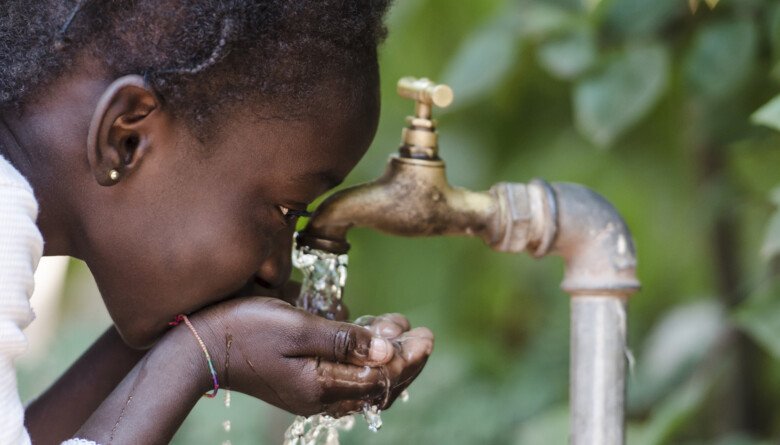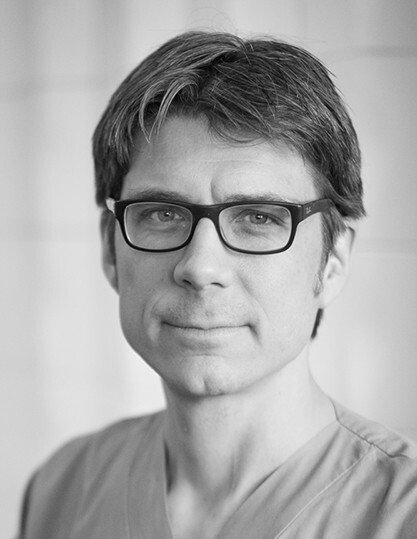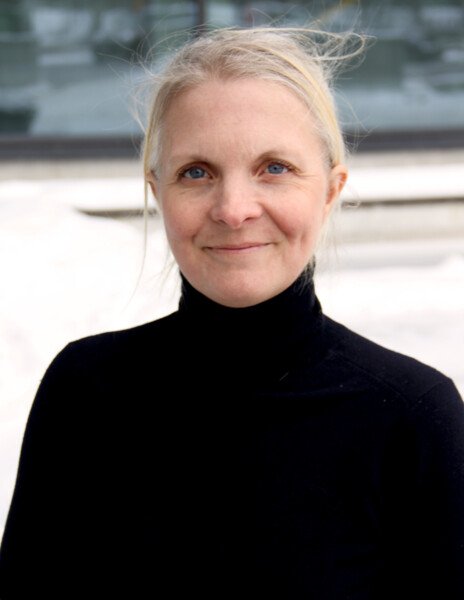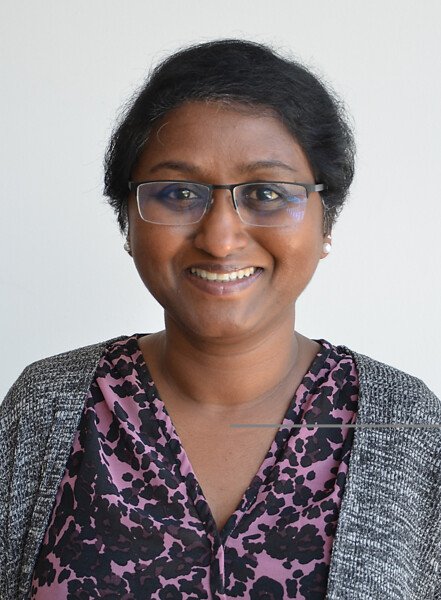Towards a better world
We are agreed on the global Sustainable Development Goals goals, but how will we get there? Researchers have a plan.

Text: Ola Danielsson, first published in Swedish in the magazine Medicinsk Vetenskap No 2/2018.
In September 2015, the United Nations General Assembly adopted Agenda 2030, a vision for a better world that includes 17 global Sustainable Development Goals (SDGs) with 169 associated targets. Member countries are now working with urgency to prepare their own action plans.
Agenda 2030’s third goal of good health and well-being may seem to represent a sufficient challenge for those seeking to improve human health, for example researchers at Karolinska Institutet. The only catch is that all of the goals are integrated, meaning that no individual goal can be achieved without also achieving the others. Health-related associated targets crop up everywhere in the other SDGs, in everything from the environment and economy to education, and vice versa.
The UN proposes increased collaboration between various types of stakeholder, nationally and globally. Tobias Alfvén, researcher in global health at Karolinska Institutet’s Department of Global Public Health, welcomes this approach.
“For the first time we have a joint framework to demonstrate how people, the ecology and the economy actually interrelate,” he says.
The UN’s eight Millennium Development Goals, towards which the world worked between 2000 and 2015, were also described as interwoven. However, according to Tobias Alfvén, these dealt with a limited set of problems primarily linked to combating poverty and other acute problems in developing countries. The 17 SDGs, which in turn consist of 169 associated targets, have a considerably broader ambition.
“The advantage of the Millennium Development Goals was that they were easy to focus on, but they didn’t really provide an overall picture,” says Tobias Alfvén.
The downside of seeing the overall picture is that the issues appear complicated and intractable.
“There is a risk that, in focusing on the overall picture, it is easy to see only the complexity and difficulties and to say that someone else is better equipped to do something about it. Then, not much gets done. That is my concern,” explains Tobias Alfvén.
He has recently been selected to participate in a leadership programme arranged by the Swedish Institute for Global Health Transformation (SIGHT), in which he and researchers from other disciplines will work to strengthen the ability of Swedish research to contribute to Agenda 2030.
Simultaneously solve multiple problems
Tobias Alfvén believes that one of Agenda 2030’s strengths is that it offers increased opportunities to simultaneously solve multiple problems, if only people are able to collaborate and lift their gazes to focus on these common goals. One example of a goal of manageable scope may be that of a healthy urban environment.

“Many cities are neither healthy, sustainable nor environmentally friendly. However, if we can succeed in improving just one of these areas, we will also positively impact on the others. In this, we as researchers can engage in cross-disciplinary collaboration and together contribute to finding smart solutions,” says Tobias Alfvén.
Another unifying strategy proposed by Tobias Alfvén is to consider how we can make life as good as possible for our children, from the womb, through birth and on to adulthood.
“A reasonable environment in which to grow up in good health – I think we can all reach some kind of agreement on what that looks like. If we succeed in that, then we will have a society that works for almost everyone,” he says.
Tobias Alfvén and his colleagues recently published an article analysing how the health of children can benefit from improvements to a number of sectors of society in addition to medicine; for example, education, commerce, agriculture, social security and transport.
Conversely, children are among those who suffer most in poorly performing societies. One SDG target on child health states a mortality rate for children under five years of age globally of less than 25 deaths per 1,000 live births.
“This figure, which I consider to be perhaps the most important indicator of health globally, is currently 43. That means that we need to almost halve that figure, which is very ambitious.”
Reduction in child mortality
However, Tobias Alfvén thinks that this is a reasonable target. He points out that the world has already succeeded in halving child mortality once, during the period 1990-2015 when working towards the Millennium Development Goals.
“The enormous reduction in child mortality over the past 25 years is an entirely unprecedented improvement,” he says.
Major positive social transformations, such as the reduction in extreme poverty and increased access to clean water and education, combined with targeted measures such as vaccinations, fluid replacement in cases of acute diarrhoea and improved malaria prophylaxis and treatment, were crucial in reducing child mortality.
However, even in societies where basic human needs are met, children will be born prematurely, meaning that a good healthcare system is also essential. This is difficult to achieve rapidly in countries that lack the necessary preconditions. According to Tobias Alfvén however, it is important to ensure that minor changes to existing systems can lead to major changes to the efficiency of healthcare.
He and his colleagues have just completed a study in Ethiopia to reassess how children with fever should be treated. Fever may be the result of a relatively innocuous infection or a symptom of malaria, pneumonia or diarrhoea – the three most common causes of death in children under five years of age. Local village health centres may identify these diseases, although sometimes their cause is not immediately apparent.
In the researchers’ study, half of these children were instructed to return after three days in accordance with World Health Organization guidelines. The other half were advised not to return unless the fever persisted or became worse.
“It became apparent that this made no difference whatsoever to the outcome for the children. We hope that this will influence the global advice on how these children are dealt with,” says Tobias Alfvén.
The purpose is to free resources for those in real need.
“Global guidelines affect millions of healthcare visits each year but they are far from always evidence-based. Unnecessary healthcare visits can result in a deterioration in health as resources are taken from elsewhere, both from healthcare services and from families who could have worked instead of travelling long distances to hospitals,” he says.
Another project is refining rapid testing to more easily differentiate between bacterial and viral pneumonia.
Oxygen deprivation during birth
A further research project is aimed at the second most common cause of death during the first month of life, oxygen deprivation during birth. The current standard treatment is to assist breathing using a bag valve mask. Correctly administered this is an effective method but it requires experience. If the child’s neck is held at the wrong angle, no air will be admitted.
As an alternative, the larynx mask has therefore been trialled in a randomised study conducted in Uganda. The larynx mask is easier to use for those with limited experience. The question that remains to be answered is whether this will lead to more children being saved.
To facilitate the evaluation of SDG goals and targets, the UN has agreed on 232 measurable indicators. Of these, 50 deal with health. The Global Burden of Disease Study (GBD) international research collaboration monitors the global health situation and has analysed 37 of these indicators for 188 countries during the period 1990-2016.

According to GBD, Singapore, Iceland and Sweden are the countries that best meet the development goals, while Afghanistan, the Central African Republic and Somalia have furthest to go.
However, Emilie Agardh, Associate Professor in epidemiology at Karolinska Institutet’s Department of Global Public Health and a driving force behind Swedish cooperation with GBD since 2012, points out that there are major inequalities even within countries. Sweden is no exception and even here there is much left to do.
“Even if Sweden’s healthcare system has been ranked as one of the best in the world, as in many other high-income countries, there are significant variations in health between different regional health authorities, as well as between social groups. The underlying causes of these variations are not entirely clear and we still lack a good, comparable overall picture,” she says, and believes that GBD has the potential to offer just that.
A cornerstone of Agenda 2030 is that SDGs apply to all segments of the population. No one may be left behind. In order to make this possible, many countries are currently attempting to make visible their internal health inequalities. Emilie Agardh contributes by working to ensure that future analyses within the framework of GBD contain more detailed information about Sweden, based on the various health authorities and socioeconomic groups.
“Information is required for future measures to reduce inequalities in health, as well as to facilitate evaluation of UN Sustainable Development Goals at a subnational level in Sweden and to compare ourselves with other countries at a more local level,” she says.
According to Emilie Agardh, Sweden, as one of the countries that best fulfils the SDGs, can also contribute knowledge of how and why progress is or is not being made, by highlighting successful initiatives and disseminating this information both nationally and internationally.
Noncommunicable diseases
The primary causes of the burden of disease globally are noncommunicable diseases such as cardiovascular disease, cancer, mental illness/addiction, musculoskeletal diseases and diabetes. These are linked to physical activity, diet and other lifestyle factors that differ between social groups and countries.
According to SDG targets, premature mortality from non-communicable diseases should be reduced by one third by 2030. However, type 2 diabetes is a growing problem in many societies.
Meena Daivadanam, researcher on global health at Uppsala University and the Department of Global Public Health at Karolinska Institutet**, leads the Smart2D Project, an attempt to arrest the diabetes epidemic in three locations; rural Uganda, an urban township in South Africa and in socially deprived suburbs of Sweden.

She explains that measures are required on a broader front than healthcare services alone can provide. Preventing future epidemics is not healthcare’s primary focus. Neither do those groups that require help always contact healthcare services.
“The people who are dealt with by healthcare services are primarily those who already have a disease. However, in the case of type 2 diabetes it is preferable to reach people at an early stage, so that the disease can be prevented or treated in good time,” she says.
Within Smart2D, strategies are being tested that have been shown to be successful in supporting the healthcare system in other contexts. Among other things, this is a matter of task shifting, where tasks are transferred from the healthcare to stakeholders such as municipalities, community organizations or ordinary citizens.
First, a system for diabetes screening is trialled at public places outside of the healthcare system. This is followed by an intervention phase during which people with diabetes or at risk of diabetes are offered the opportunity to participate in peer mentoring activities aimed at altering lifestyles.
Various scientific disciplines
The project involves collaboration between various scientific disciplines (such as anthropology, behavioural sciences, endocrinology, health economics, etc), as well as different social stakeholders and citizens in the three countries. The goal is to identify strategies that work in real life.
“We cannot do this ourselves simply as academic and medical institutions. The biomedical approach will take us only so far but, in order to see the problem in its entirety, we need more perspectives and to work as a team,” she explains.
Meena Daivadanam is circumspect when it comes to whether the global goals will be fulfilled. However, she sees great value in the fact of their existence.
“Without that level of ambition, they would not be good goals. When it comes to research into non-communicable diseases, they have definitely made a difference already through increased funding, especially for projects with an integrated approach that study diseases in context, but of course more is needed,” she concludes.
The world in 2030
1. No poverty
2. Zero hunger
3. Good health and well-being
4. Quality education for all
5. Gender equality
6. Clean water and sanitation
7. Affordable and clean energy for all
8. Decent work and economic growth
9. Sustainable industry, innovation and infrastructure
10. Reduced inequality
11. Sustainable cities and communities
12. Responsible consumption and production
13. Climate action
14. Protected life below water
15. Protected life on land
16. Peace, justice and strong institutions
17. Partnerships for the goals
Source: sustainabledevelopment.un.org
Goal 3: Good health and well-being
The overall aim of the third goal in Agenda 2030 is to “ensure healthy lives and promote well-being for all at all ages”. The associated targets include:
Maternal mortality. Down to less than 70 maternal deaths per 100,000 births.
Child mortality. Infants: Down to less than 12 deaths per 1,000 living births. Up to five years of age: Down to less than 25 deaths per 1,000 living births.
Infectious diseases. AIDS, tuberculosis, malaria and neglected tropical diseases to be eradicated. Hepatitis, waterborne diseases and other infectious diseases to be combated.
Non-communicable diseases. Deaths to be reduced by one third. Mental health and wellbeing to be promoted.
Drug abuse. To be prevented and treated.
Traffic accidents. Deaths and injuries to be halved.
Sexual and reproductive healthcare. To be available to all.
General health and medical care. To be available to all.
Chemical and environmental pollution. Significantly reduced number of deaths and illnesses.
Source: sustainabledevelopment.un.org
